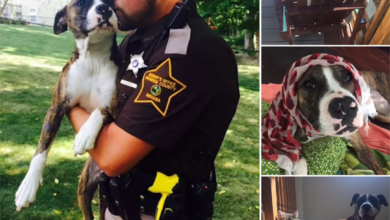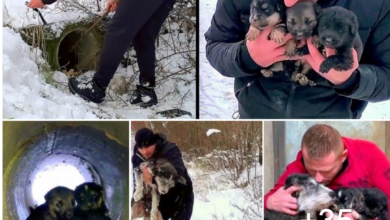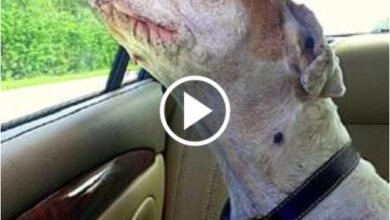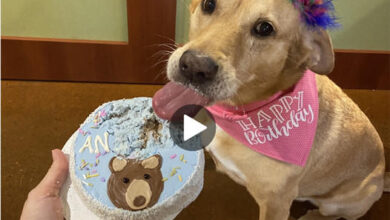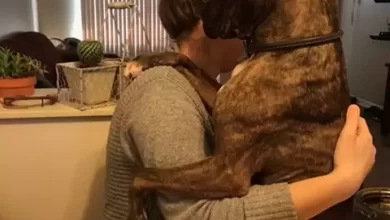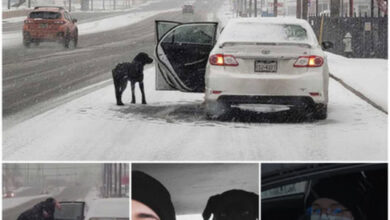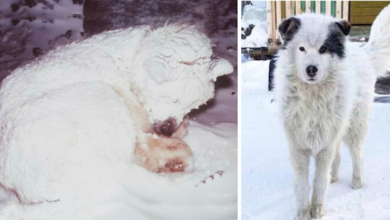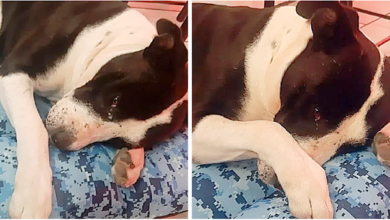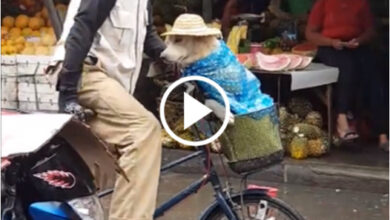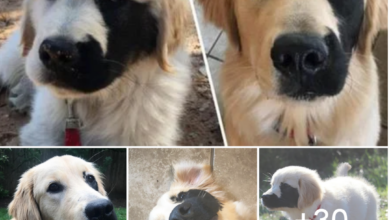
As a dog owner, you want to keep your furry friend healthy and happy. One of the most important ways to do that is by feeding them a proper diet. However, it’s not just what your dog eats that matters – it’s also what they don’t eat. There are some foods that can be extremely dangerous dog food, even in small amounts.
In this article, we’ll explore some of these dangerous foods and why they should never be given to your dog.
First on the list is chocolate. You may have heard that chocolate is bad for dogs, but do you know why? Chocolate contains a substance called theobromine which can cause vomiting, diarrhea, seizures, and even death in dogs. The darker the chocolate, the more dangerous it is for your furry friend. As little as 20 mg per pound of body weight can cause symptoms in dogs, which means even a small piece of dark chocolate could be deadly for a small dog.
It’s best to keep all forms of chocolate away from your pup to avoid any potential harm or illness.
Chocolate
Hey dog owners, did you know that chocolate is a big no-no for your furry friend? While it may be a delicious treat for us humans, chocolate contains theobromine and caffeine which can be harmful to dogs. In fact, eating chocolate can cause vomiting, diarrhea, seizures and even death. It’s important to keep all forms of chocolate – milk, dark or white – away from your dog at all times to prevent any potential health risks.
So what should you do if your dog accidentally gets into some chocolate? The first step is to call your veterinarian right away. They’ll advise you on the best course of action based on the amount and type of chocolate consumed by your pet. Depending on the severity of the situation, they may recommend inducing vomiting or administering medication to counteract the effects of theobromine.
If you’re looking for an alternative treat for your furry friend, there are plenty of options available that are safe and tasty. Try giving them fresh fruits like apple slices or banana chunks as a healthy snack. You can also find specially made dog treats that are made with ingredients specifically designed for canine consumption. Just make sure to always read ingredient labels carefully before giving anything new to your dog.
Now let’s talk about another dangerous food – grapes and raisins – that should also be kept away from your four-legged companion.
Grapes and Raisins
Did you know that grapes and raisins can be toxic to your dog? The exact toxin in these fruits is still unknown, but we do know that it can cause kidney failure in dogs.
Symptoms of grape and raisin toxicity include vomiting, diarrhea, lethargy, and decreased appetite. If you suspect your dog has eaten grapes or raisins, seek veterinary treatment immediately to prevent further damage to their kidneys.
It’s important to keep these dangerous foods out of reach of your furry friend to ensure their safety.
The Unknown Toxin in Grapes and Raisins
Unfortunately, grapes and raisins can be toxic to dogs, causing kidney failure in some cases. This danger is like a hidden minefield for pet owners who may not know that these seemingly harmless snacks can be deadly for their furry friends.
The exact toxin in grapes and raisins that causes canine grape toxicity is still unknown, but researchers believe it could be a combination of compounds such as tannins and flavonoids. The severity of the toxicity can vary depending on the size of the dog, the amount consumed, and individual sensitivity.
Symptoms may not appear immediately after ingestion, making it difficult to identify the cause. If you suspect your dog has ingested grapes or raisins, it’s important to seek veterinary care right away.
In the next section, we will discuss some common symptoms of grape and raisin toxicity in dogs.
Symptoms of Grape and Raisin Toxicity in Dogs
The symptoms of grape and raisin toxicity in dogs can range from vomiting and diarrhea to lethargy and decreased appetite. If your dog has ingested grapes or raisins, you may notice them becoming hyperactive, exhibiting signs of abdominal pain, or even showing signs of kidney failure. This is because the toxin in grapes and raisins affects the kidneys directly.
Here are three potential consequences of grape and raisin consumption that could be devastating for your furry friend:
- Your dog may experience acute renal failure, which can lead to a host of health problems.
- The toxin in grapes and raisins can cause dogs to develop vomiting and diarrhea, leading to dehydration.
- Lethargy is another symptom of grape and raisin toxicity in dogs, which can be dangerous if not addressed promptly.
It’s important to note that there are other foods besides grapes and raisins that can be harmful to your dog’s health. Causes of chocolate toxicity in dogs include theobromine – a chemical compound found in cocoa beans – while avocado consumption by dogs can result in an upset stomach or even pancreatitis.
In the next section, we’ll discuss treatment options as well as ways to prevent accidental ingestion of dangerous foods by your pet.
Treatment and Prevention
To keep your furry friend healthy and safe, you can take certain preventive measures to avoid accidental ingestion of harmful foods. One way is to keep all toxic foods out of reach or locked away in cabinets. You can also train your dog not to scavenge for food by providing them with enough nutritious meals throughout the day.
In case they do ingest something dangerous such as grapes or raisins, it’s important to know the proper treatment. Immediately take your dog to the vet and try inducing vomiting if it’s within two hours of ingestion.
Prevention is always better than cure, so consider alternative dog-friendly foods such as carrots, apples, or blueberries instead of giving them human snacks that may contain harmful ingredients.
As we move on to discussing onions and garlic toxicity in dogs, let’s remember the importance of taking preventive measures and finding healthier options for our furry companions’ snacking habits.
Onions and Garlic
Did you know that onions and garlic can cause damage to your dog’s red blood cells, leading to anemia? These foods contain compounds called thiosulphates which are toxic to dogs. Consumption of just a small amount of onion or garlic can be harmful to your furry friend. This is because a dog’s body cannot break down these compounds efficiently.
Health risks associated with feeding your dog onions and garlic include anemia, pale gums, lethargy, vomiting, diarrhea, and difficulty breathing. If you suspect that your pet has ingested any amount of onion or garlic, it’s important to contact your veterinarian immediately. They may recommend inducing vomiting or administering activated charcoal to prevent further absorption of the toxins.
Instead of using onion or garlic as seasoning options for your dog’s food, consider using other alternatives such as parsley, rosemary or basil. These herbs not only add flavor but also provide health benefits such as fresh breath and antioxidant protection. Additionally, there are many commercially available dog-friendly seasoning options that are free from harmful ingredients like onion and garlic.
Avocado is another food that poses a risk to dogs if consumed in large quantities. So let’s move on to the next subtopic about this fruit and learn more about its potential dangers for our furry friends.
Avocado
Beware of feeding your furry friend avocados, as they can be harmful to their health. While avocados have many health benefits for humans, they contain a toxin called persin that can cause vomiting and diarrhea in dogs. In some cases, avocado ingestion has even led to more serious health issues such as pancreatitis.
However, if you still want to introduce avocado into your dog’s diet, there are safe ways to do so. First, make sure the avocado is ripe and mash it up before giving it to your dog. This will help prevent choking hazards and make the fruit easier for them to digest. Additionally, only give small amounts of avocado as a treat or added ingredient in their regular food.
Now that you know about the dangers of avocado for dogs, it’s important to also be aware of another common household item that can harm them: xylitol. This sugar substitute is commonly found in sugar-free gum and other products and can cause insulin release leading to hypoglycemia (low blood sugar), seizures, liver failure or even death in dogs.
Keep an eye out for xylitol-containing items around your home and always check ingredient labels before sharing any human food with your furry friend.
Xylitol
Now that you know about the dangers of feeding your dog avocado, let’s talk about another food that could be just as harmful for them: xylitol. This artificial sweetener is commonly found in sugar-free gum, candy, baked goods, and even some toothpaste. While it may be safe for humans to consume in moderation, it can have serious consequences if ingested by dogs.
The dangers of xylitol for dogs are numerous. If a dog eats something containing this sweetener, it can cause a rapid insulin release that leads to hypoglycemia (low blood sugar). Symptoms of xylitol poisoning include vomiting, loss of coordination, seizures, and even liver failure. It doesn’t take much xylitol to cause a problem either – as little as one or two pieces of gum could lead to toxicity in a small dog.
As a responsible pet owner, it’s important to avoid giving your dog any foods or products that contain xylitol. Instead, opt for safe alternatives like plain Greek yogurt or fresh fruits such as strawberries or blueberries as occasional treats. If you suspect your dog has ingested anything with xylitol in it (even if they’re not showing symptoms yet), seek veterinary care immediately.
When it comes to keeping your furry friend safe from harm, knowledge is key. Now that we’ve covered the risks associated with avocado and xylitol consumption in dogs, let’s move on to another dangerous food: alcohol.
Alcohol
If you’re a dog owner, it’s important to know that alcohol can be extremely dangerous for your furry friend. Even small amounts of alcohol can have serious effects on dogs, including vomiting, diarrhea, difficulty breathing, and even coma or death in severe cases.
If you suspect your dog has ingested alcohol or is showing symptoms of alcohol poisoning, it’s crucial to seek veterinary care immediately. By being aware of the risks and taking steps to prevent your dog from accessing alcohol, you can help keep them safe and healthy.
The Effects of Alcohol on Dogs
Congratulations, you may enjoy a nice cold beer after work, but your furry friend will not appreciate the effects of alcohol on their system. Alcohol and dogs do not mix well due to their smaller body size and differences in metabolism. Even small amounts of alcohol can be dangerous for your dog as it can lead to many risks such as vomiting, diarrhea, difficulty breathing, coma, or even death.
Can dogs get drunk? Yes, they can. Dogs are more sensitive to the effects of alcohol than humans, and even a small amount of alcohol can cause significant damage to their health. Signs that your dog may have consumed alcohol include staggering or stumbling while walking, confusion, or disorientation. It is important to keep all alcoholic beverages out of reach from your pet and never intentionally give them any amount of alcohol.
Symptoms of alcohol poisoning in dogs can be severe and require immediate veterinary attention. If you suspect your dog has ingested alcohol accidentally, watch out for some common symptoms, such as vomiting, diarrhea, difficulty breathing, coma, or even death.
Symptoms of Alcohol Poisoning in Dogs
Alcohol poisoning in dogs can have serious symptoms, and immediate veterinary attention is necessary. It’s important to know the signs of alcohol poisoning so that you can take action quickly. Here are some common symptoms to look out for:
- Vomiting
- Diarrhea
- Loss of coordination
- Difficulty breathing
- Seizures
If you notice any of these symptoms in your dog, seek emergency care right away. Time is of the essence when it comes to alcohol poisoning, so don’t hesitate to call your vet or bring your dog to an animal hospital.
Prevention measures are key when it comes to keeping your dog safe from alcohol poisoning. Keep alcoholic beverages out of reach and never give your dog alcohol intentionally. If you’re having a party or gathering where there will be alcohol around, make sure that someone is designated to keep an eye on pets and prevent them from accidentally ingesting any alcoholic drinks.
With proper prevention measures in place, you can avoid the potentially deadly effects of alcohol on your furry friend. The next section will cover treatment and prevention in more detail.
Treatment and Prevention
Now that you’re familiar with the symptoms of alcohol poisoning in dogs, it’s important to know what to do if your furry friend ingests alcohol. Emergency treatment should be sought immediately, as alcohol can have serious and potentially fatal effects on dogs. Treatment may involve inducing vomiting or administering activated charcoal to prevent further absorption of the alcohol into the bloodstream.
Preventive measures are also important when it comes to keeping your dog safe from accidental ingestion of harmful substances like alcohol. This includes keeping all alcoholic beverages out of reach of your dog, being aware of any spills or dropped drinks at social gatherings or parties, and educating others about the dangers of giving alcohol to dogs. By taking these precautions and knowing how to respond in case of an emergency situation, you can help keep your four-legged companion healthy and happy.
As important as it is to know how to treat alcohol poisoning in dogs, it’s equally crucial to be aware of other foods that can be dangerous for them. Let’s take a look at some common foods that should never make their way into your pet’s bowl.
Other Foods to Avoid
You should also avoid giving your dog macadamia nuts, cooked bones, fat trimmings, and bones from meat. Macadamia nuts can cause vomiting, hyperthermia, tremors, and weakness in dogs.
Cooked bones can easily splinter and cause damage to your dog’s digestive tract or even choke them.
Fat trimmings and bones from meat can lead to pancreatitis or gastrointestinal problems for your furry friend.
It’s important to keep these foods out of reach and stick to a safe diet for your dog’s health.
Macadamia Nuts
If your furry friend accidentally munches on a macadamia nut, it’s like opening Pandora’s box and unleashing a whole lot of trouble. Macadamia nuts are notorious for causing severe symptoms in dogs, including vomiting, muscle tremors, hyperthermia, and lethargy. These symptoms usually appear within 12 hours of ingestion and can last up to 48 hours.
To avoid macadamia nut allergy or any other related issues with your dog, you should keep them on a nut-free diet. This means avoiding all kinds of nuts such as almonds, walnuts, hazelnuts in their food or treats. Instead of giving them nuts as snacks or rewards for good behavior, try using healthier alternatives like carrots or apples which are equally tasty but not dangerous for your furry friend.
Moving onto the next subtopic about cooked bones: it is important to remember that feeding your dog cooked bones can also lead to serious health complications.
Cooked Bones
Feeding your pup bones that have been cooked can be hazardous. While it may seem like a natural treat for your furry friend, the risks of feeding bones to dogs are significant.
Cooked bones can splinter easily, causing internal damage to the digestive tract. These sharp fragments can puncture the stomach or intestines, leading to severe illness or even death.
The dangers of cooked bones for dogs should not be taken lightly. It’s important to keep all types of bones away from your pets, including chicken and pork bones. Instead, opt for safer treats such as dental chews or rawhide.
In the next section, we’ll discuss another dangerous food item: fat trimmings and bones from meat.
Fat Trimmings and Bones from Meat
Including fat trimmings and bones from meat in your pup’s diet can pose a potential risk to their digestive health. While it may be tempting to give them these scraps, it’s important to understand the risks of feeding fat trimmings and bones to dogs.
For one, consuming too much fat can lead to obesity and other related health problems in dogs. Secondly, ingesting large chunks of fat can cause pancreatitis, an inflammation of the pancreas that can be extremely painful for your furry friend.
Giving bones to dogs may seem harmless at first glance but it actually poses several dangers as well. First off, cooked bones are prone to splintering which could cause damage to your dog’s mouth or throat if ingested. Moreover, even raw bones have been known to cause choking or blockages in a dog’s digestive system.
It is best not to give your pet any kind of bone without consulting with a veterinarian first.
Conclusion
Now that you know about the dangerous dog foods that your dog should never eat, it’s important to keep them out of reach. Remember, dogs are curious creatures and may try to sneak a taste of something they shouldn’t have. Don’t take any chances with their health and well-being.
Think of your dog as a delicate flower garden – you wouldn’t want to plant anything harmful or toxic in there. Similarly, when it comes to feeding your furry friend, be mindful of what goes into their body.
With proper care and attention, you can ensure that they stay healthy and happy for many years to come. So next time you’re reaching for a snack or cooking up a meal, remember to keep these dangerous foods away from your pup and stick to safe options instead!
Read more:
How To Choose A Healthy Dog Food






